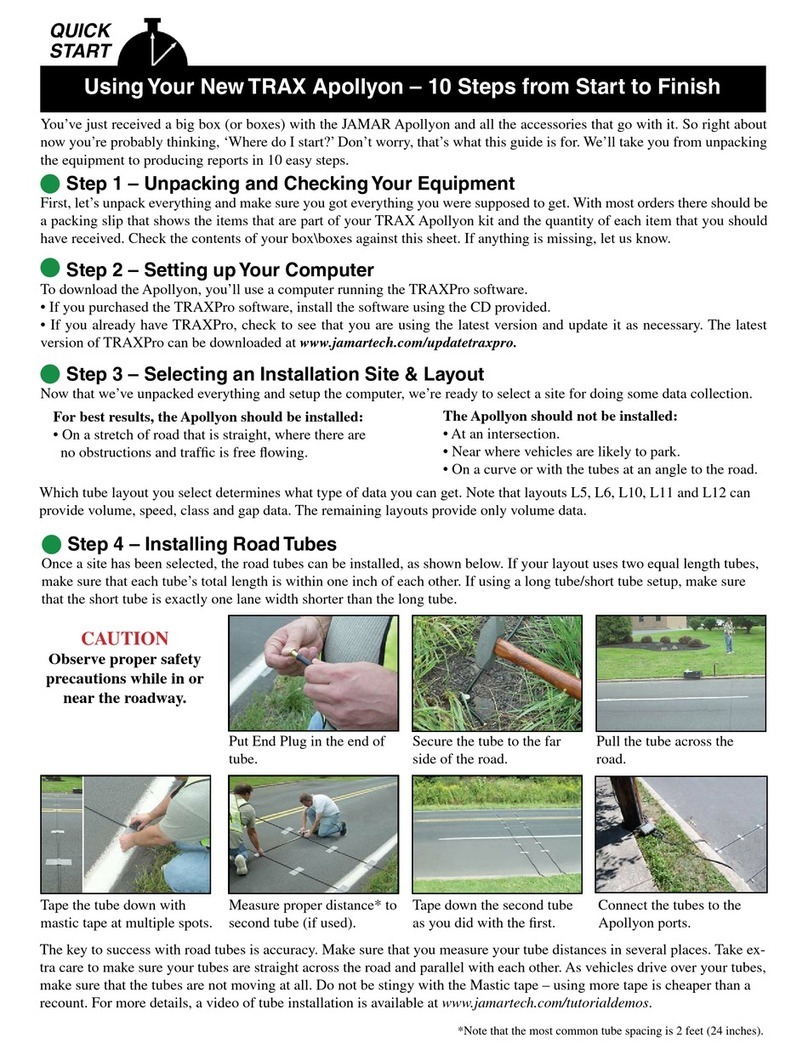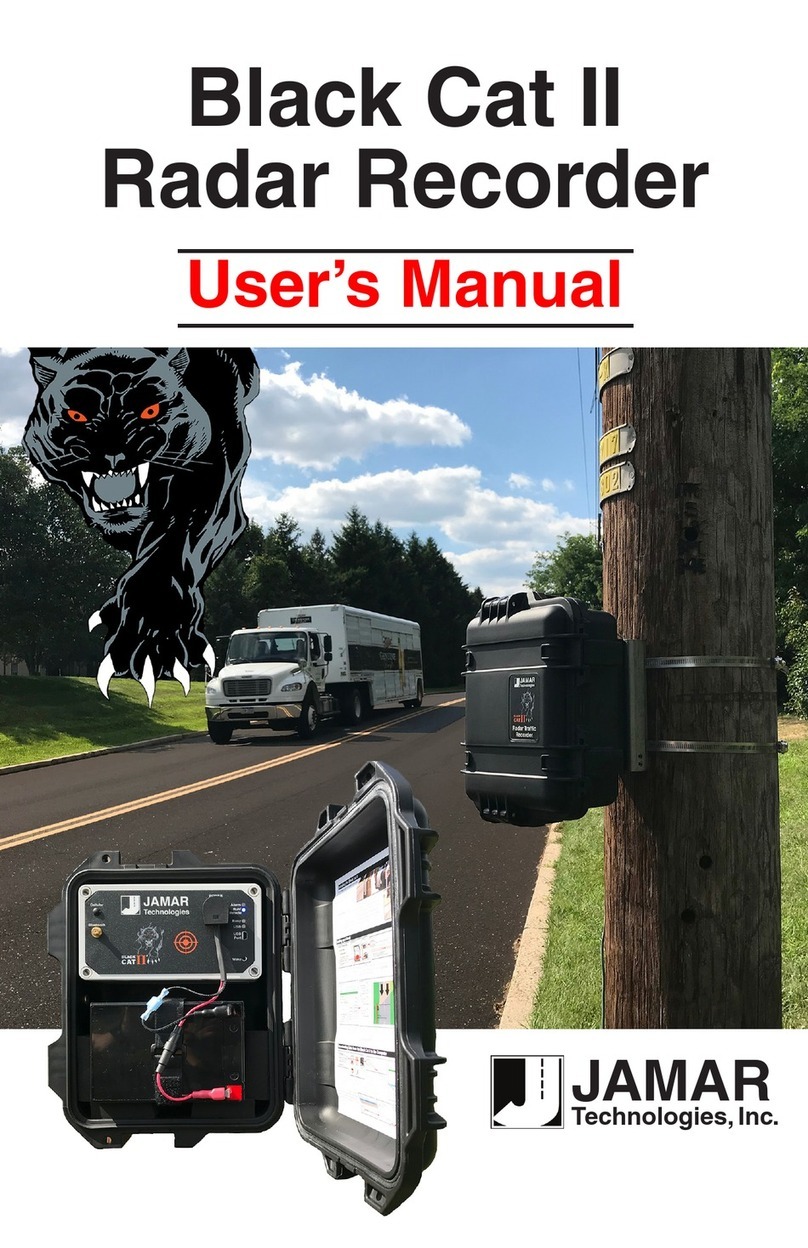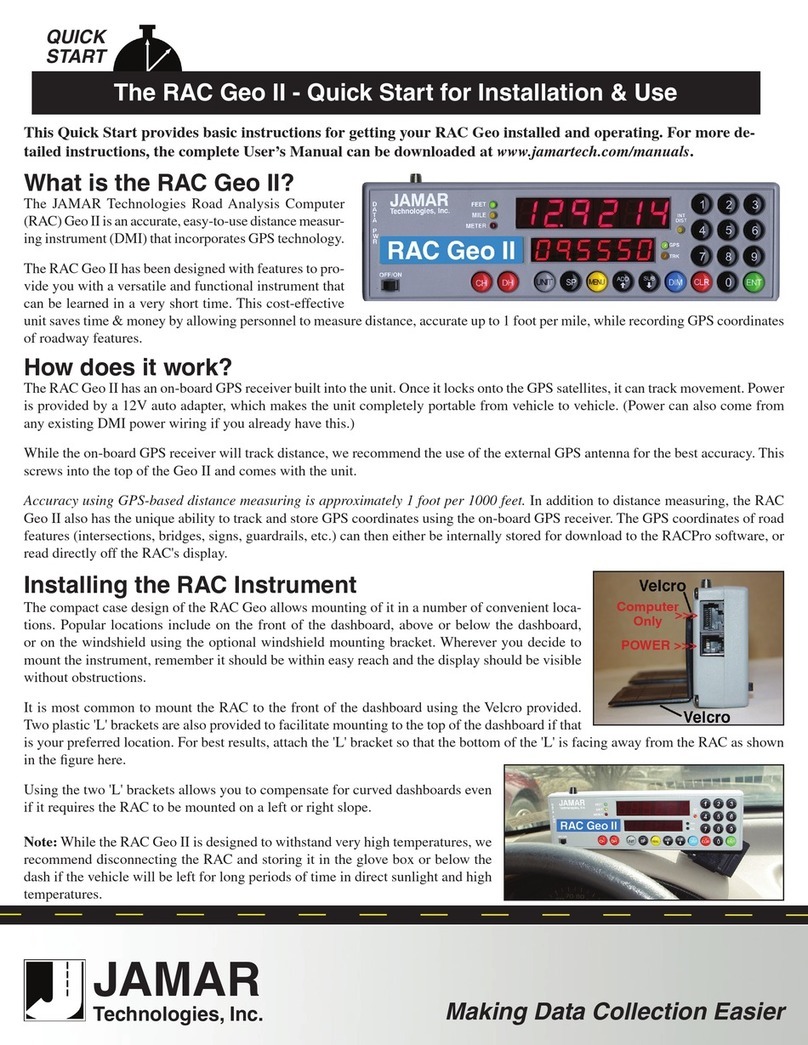JAMAR Technologies RAC Plus Series User manual
Other JAMAR Technologies Measuring Instrument manuals

JAMAR Technologies
JAMAR Technologies DB-100 User manual

JAMAR Technologies
JAMAR Technologies TRAX Apollyon User manual

JAMAR Technologies
JAMAR Technologies Black Cat II User manual

JAMAR Technologies
JAMAR Technologies TRAX I User manual

JAMAR Technologies
JAMAR Technologies RAC Geo II User manual

JAMAR Technologies
JAMAR Technologies RAC Plus I User manual
Popular Measuring Instrument manuals by other brands

Powerfix Profi
Powerfix Profi 278296 Operation and safety notes

Test Equipment Depot
Test Equipment Depot GVT-427B user manual

Fieldpiece
Fieldpiece ACH Operator's manual

FLYSURFER
FLYSURFER VIRON3 user manual

GMW
GMW TG uni 1 operating manual

Downeaster
Downeaster Wind & Weather Medallion Series instruction manual

Hanna Instruments
Hanna Instruments HI96725C instruction manual

Nokeval
Nokeval KMR260 quick guide

HOKUYO AUTOMATIC
HOKUYO AUTOMATIC UBG-05LN instruction manual

Fluke
Fluke 96000 Series Operator's manual

Test Products International
Test Products International SP565 user manual

General Sleep
General Sleep Zmachine Insight+ DT-200 Service manual















